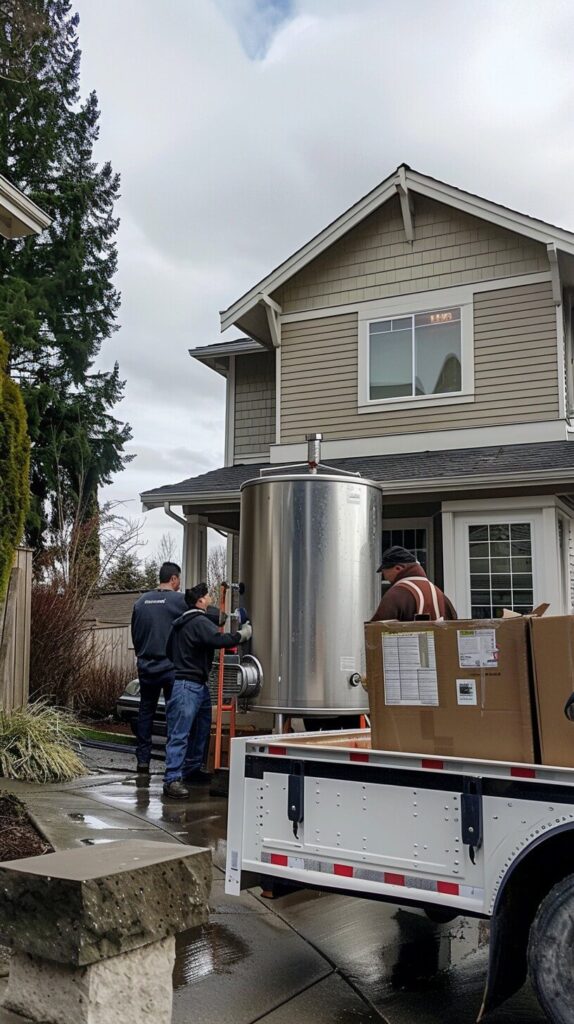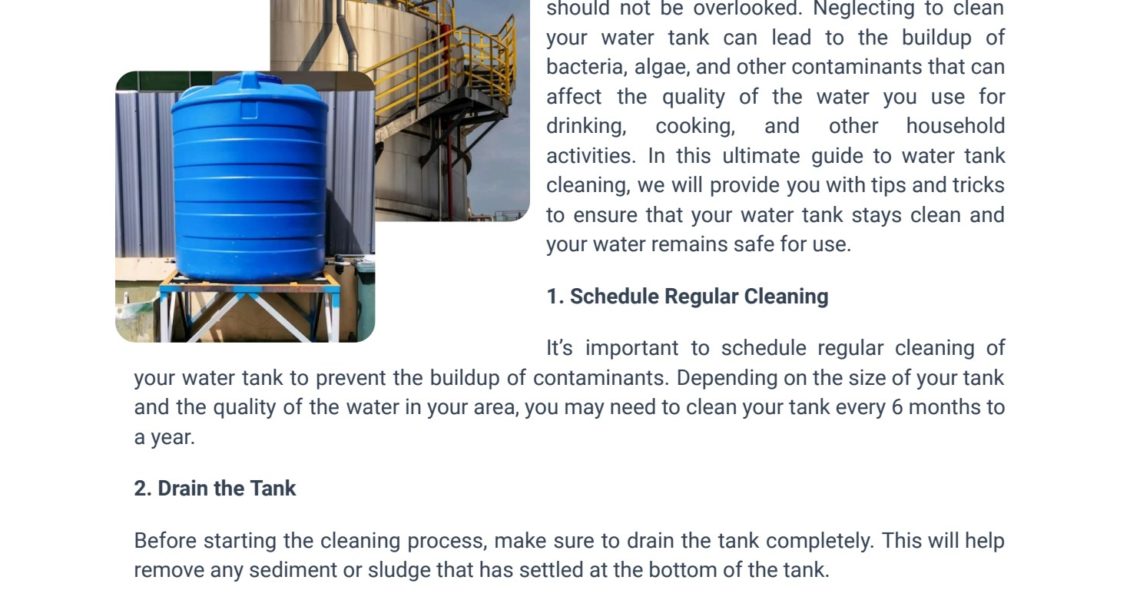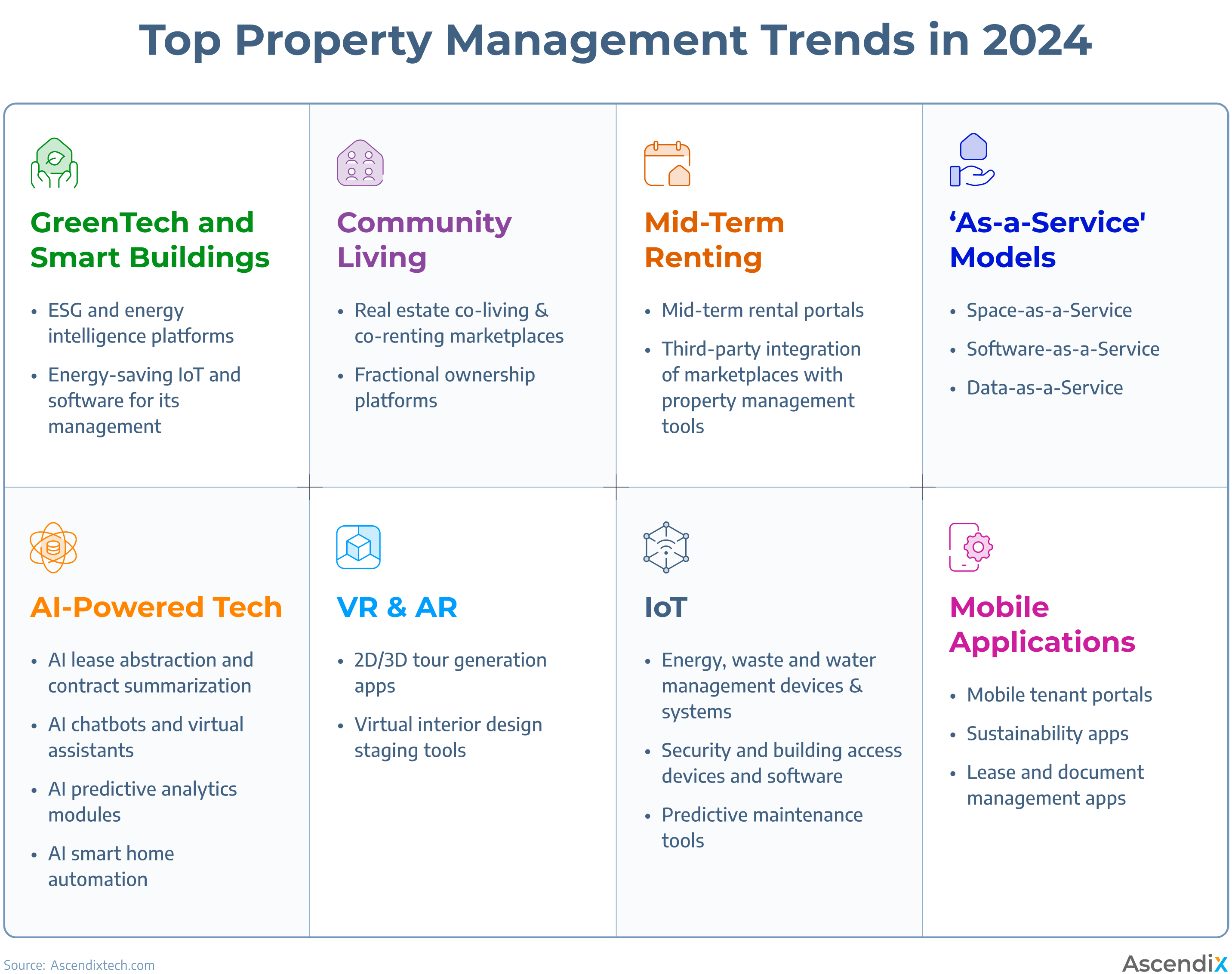
Water tanks are an invaluable resource for storing water for household use, gardening, and emergencies.
Ensuring the safety of the water stored in these tanks is crucial for health and peace of mind. This comprehensive guide addresses common questions and concerns, providing practical advice and relatable examples to help you maintain a clean and safe water supply.
Common Questions and Concerns
- How do I keep my water tank clean?
Keeping your water tank clean is essential to ensure the water remains safe for use. Regular cleaning prevents the buildup of sediment, algae, and bacteria.
- What are the signs of contamination?
Understanding the signs of contamination can help you address issues before they become severe. Look out for changes in colour, taste, or smell, as well as any visible debris.
- How often should I inspect my water tank?
Regular inspections are crucial for maintaining water quality. Knowing the right frequency and what to look for can help you catch potential problems early.
- What materials are best for water tanks?
Different materials have various benefits and drawbacks. Understanding the pros and cons of plastic, concrete, and metal tanks can help you choose the best option for your needs.
- How can I ensure my water tank is properly sealed?
Proper sealing prevents contaminants from entering the tank. Ensuring the seals are intact and secure is vital for water safety.
- What is the best location for my water tank?
Choosing the right location for your water tank can impact its longevity and the quality of water stored.
Consider factors like exposure to sunlight, proximity to pollutants, and ease of access for maintenance.
- How can I protect my water tank from external contaminants?
External contaminants, including debris, animals, and chemical runoff, can compromise water quality. Knowing how to shield your tank from these threats is essential.
Keeping Your Water Tank Clean
Cleaning Steps
Cleaning your water tank doesn’t have to be a daunting task.
Here are detailed steps to follow:
- Drain the Tank: Before cleaning, ensure the tank is empty. Use the water for gardening or other non-potable purposes.
- Scrub the Interior: Use a long-handled brush and a mixture of water and mild detergent. Avoid harsh chemicals that can leave residues. Focus on scrubbing all surfaces, especially corners and joints where sediment can accumulate.
- Rinse Thoroughly: After scrubbing, rinse the tank thoroughly to remove any soap or debris. Use a high-pressure hose if available.
- Disinfect: Use a safe disinfectant like chlorine bleach. Add a small amount to the water, swish it around, and let it sit for a few hours before draining and rinsing again. Ensure the disinfectant reaches all areas of the tank.
Additional Tips for Cleaning
- Schedule Regular Cleaning: Set reminders to clean your tank at least once a year. If your water source is prone to contamination, more frequent cleaning may be necessary.
- Use Protective Gear: Wear gloves and protective clothing to avoid contact with contaminants during cleaning.
- Consult Professionals: If you’re unsure about cleaning your tank, consider hiring a professional service to ensure thorough cleaning and maintenance.
Identifying Contamination
Signs of Contamination
Knowing the signs of contamination can save you from using unsafe water.
Here are some red flags:
- Discoloration: Water that appears brown, green, or cloudy.
- Odd Taste or Smell: Metallic, sulfuric, or foul odours and tastes.
- Visible Debris: Any floating particles or sediment at the bottom of the tank.
Testing for Contaminants
Regular testing of your water can help identify issues early.
Here’s how to test for common contaminants:
- Bacteria: Use a water test kit to check for coliform bacteria and E. coli. These kits are easy to use and provide quick results.
- pH Levels: Testing the pH level can indicate if the water is too acidic or alkaline. Balanced pH levels are crucial for safe drinking water.
- Chemical Contaminants: Test for chemicals like chlorine, nitrates, and heavy metals. These can come from various sources, including industrial runoff and agricultural activities.
Prevention Tips
- Use a Lid: Ensure your tank has a secure lid to prevent debris and animals from entering.
- Filter the Water: Installing a filtration system can help remove impurities before water enters the tank.
- Monitor Surroundings: Keep an eye on the area around your tank. Remove any potential sources of contamination, such as decaying vegetation or chemicals.
Regular Inspections
Importance of Inspections
Routine inspections are essential for maintaining water quality.
Aim to check your tank at least twice a year, focusing on:
- Seals and Fittings: Ensure there are no leaks or cracks.
- Tank Interior: Look for algae, sediment, or any foreign objects.
- Water Quality: Test the water for pH, bacteria, and other contaminants.
Inspection Checklist
Here’s a checklist to help you during inspections:
- Check for Leaks: Look for any signs of water leakage around the tank.
- Inspect Seals: Ensure all seals are intact and not deteriorating.
- Examine the Tank Interior: Use a flashlight to look inside the tank for any buildup or debris.
- Test Water Quality: Use test kits to check for contaminants and pH levels.
- Monitor Water Levels: Ensure the tank is filling and draining properly.
Inspection Tips
- Use a Flashlight: A bright flashlight helps you see inside the tank clearly.
- Smell the Water: A quick sniff can reveal a lot about water quality.
- Test Kits: Home water test kits are readily available and easy to use.

Choosing the Right Material
Types of Water Tanks
Water tanks come in various materials, each with its advantages:
- Plastic: Lightweight, affordable, and easy to install. However, they can degrade in UV light. UV-resistant coatings can help extend their lifespan.
- Concrete: Durable and long-lasting but can be prone to cracking. Ensure proper sealing to prevent leaks.
- Metal: Strong and resistant to damage, but they can rust over time without proper maintenance. Galvanised or stainless steel options are more resistant to corrosion.
Pros and Cons of Each Material
- Plastic Tanks:
- Pros: Lightweight, easy to install, and cost-effective.
- Cons: Susceptible to UV damage and potential leaching of chemicals over time.
- Concrete Tanks:
- Pros: Highly durable and long-lasting.
- Cons: Heavy, can crack, and may require professional installation.
- Metal Tanks:
- Pros: Strong, durable, and resistant to physical damage.
- Cons: Can rust and require regular maintenance to prevent corrosion.
Choosing the Right Size
The size of your water tank depends on your water usage needs.
Consider the following factors:
- Household Size: More people mean higher water consumption.
- Usage: If you use water for gardening or livestock, a larger tank may be necessary.
- Rainfall: In areas with frequent rainfall, a smaller tank might suffice as it will refill often.
Ensuring Proper Sealing
Why Sealing is Important
Proper sealing prevents contaminants from entering the tank and ensures no water leaks out.
This helps maintain water quality and conserves water.
Steps to Ensure Proper Sealing
- Inspect Seals Regularly: Check seals for any signs of wear or damage.
- Use Quality Sealants: Use high-quality sealants designed for water tanks.
- Replace Worn Seals: If a seal shows signs of deterioration, replace it promptly.
Common Seal Issues
- Cracks: Small cracks can develop over time, leading to leaks.
- Wear and Tear: Seals can degrade due to weather conditions and regular use.
- Improper Installation: Poorly installed seals can fail prematurely.
Choosing the Best Location
Factors to Consider
Choosing the right location for your water tank can impact its longevity and the quality of water stored.
Consider the following factors:
- Sunlight Exposure: Excessive sunlight can promote algae growth in clear tanks and degrade plastic tanks.
- Proximity to Pollutants: Avoid placing the tank near potential contaminants like compost heaps, chemicals, or animal pens.
- Ease of Access: Ensure the tank is easily accessible for cleaning and maintenance.
- Elevation: Placing the tank at a higher elevation can improve water pressure for household use.
Tips for Placement
- Shade: If possible, place the tank in a shaded area or use a cover to protect it from direct sunlight.
- Away from Trees: Roots can damage the tank and falling leaves can contaminate the water.
- Solid Foundation: Ensure the tank is placed on a stable and level surface to prevent shifting and potential damage.
Protecting Your Water Tank
Shielding from External Contaminants
External contaminants, including debris, animals, and chemical runoff, can compromise water quality.
Knowing how to shield your tank from these threats is essential.
Methods to Protect Your Tank
- Lid and Mesh Cover: Ensure your tank has a secure lid and consider adding a mesh cover to keep out debris and insects.
- Fencing: Install a fence around the tank to keep animals away.
- Rainwater Diverters: Use diverters on downspouts to prevent leaves and debris from entering the tank.
- Regular Cleaning of Surroundings: Keep the area around your tank clean and free from potential contaminants.
Conclusion
Maintaining water safety with your water tank is crucial for ensuring a clean, reliable water supply for your household.
By regularly cleaning your tank, inspecting for signs of contamination, and choosing the right materials and location, you can prevent potential issues and enjoy peace of mind.
Remember to inspect your tank at least twice a year, address any problems promptly, and protect your tank from external contaminants with proper sealing and covers.
Choosing the best material for your tank, ensuring proper sealing, and strategically placing your tank can all contribute to a long-lasting and safe water storage solution.
Regular maintenance and vigilance will go a long way in keeping your water supply healthy and safe for all your needs.
By following these guidelines, you’re taking important steps to protect your family’s health and well-being.
Share your experiences and tips in the comments, and feel free to ask questions. Staying informed and engaged with best practices will help you keep your water tank in top condition.
Keep this guide handy, and refer back to it whenever you need a refresher on water tank maintenance.
Regular updates and community engagement will ensure your knowledge remains up-to-date, helping you provide the best care for your water tank and, ultimately, your family.












